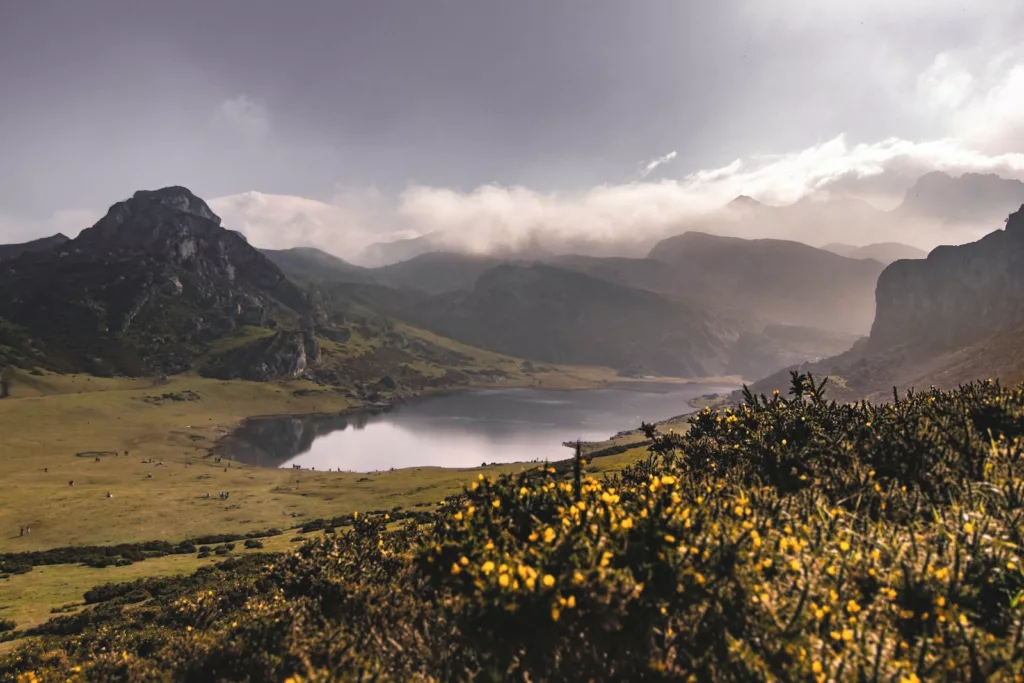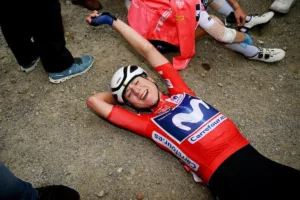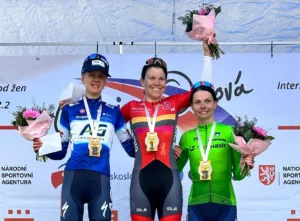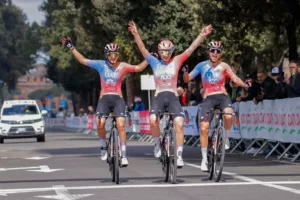Lagos de Covadonga and the Vuelta a Espana are two closely linked names in the world of cycling. The Lagos de Covadonga is a stunning mountain lake located in the Picos de Europa region of northern Spain, and the Vuelta a España is one of the most prestigious road cycling races in the world. In this article, we will explore the history, geological features, and famous moments of these two iconic destinations. This year’s La Vuelta Femenina will visit the lakes on its final stage.
History of Lagos de Covadonga
The Lagos de Covadonga are two glacial lakes located in the Picos de Europa National Park in the Asturias region of northern Spain. The lakes are surrounded by towering peaks and lush green forests, making them a popular destination for outdoor enthusiasts and nature lovers. The area has been protected as a national park since 1918 and is considered one of the most beautiful natural areas in Spain.
The lakes are named after the nearby Santuario de Covadonga, a sanctuary dedicated to the Virgin of Covadonga. According to legend, the sanctuary was built in the 8th century to commemorate the victory of the Asturian King Pelayo over the Moors in the Battle of Covadonga. Today, the sanctuary is a popular pilgrimage site and attracts thousands of visitors each year.
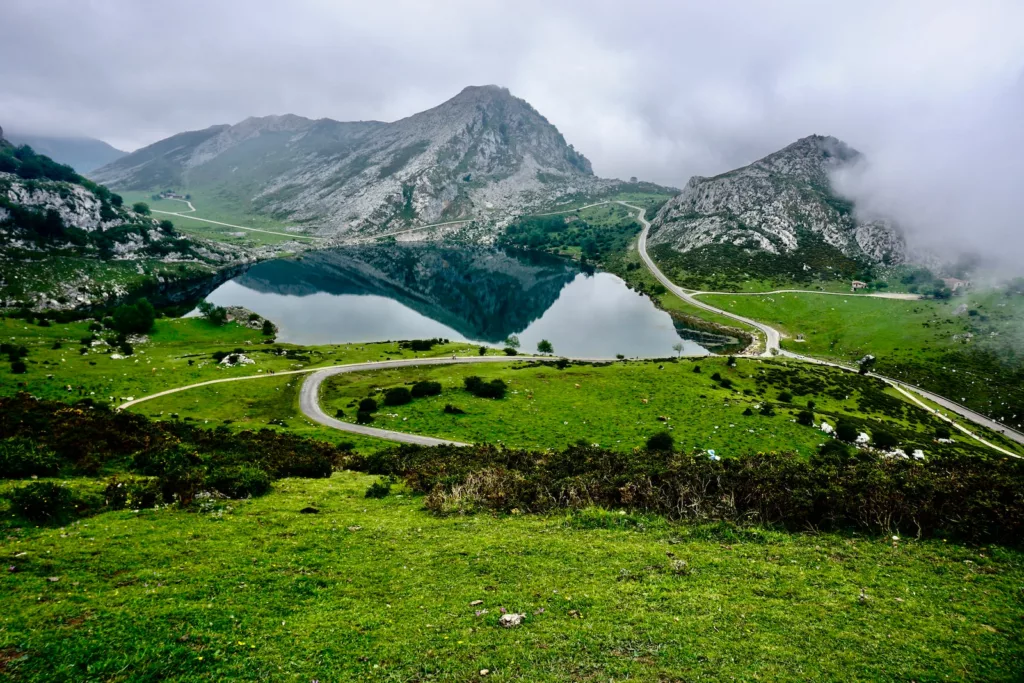
Geological Features of Lagos de Covadonga
The Lagos de Covadonga are located in a narrow glacial valley surrounded by towering peaks, including the Peña Santa de Covadonga at 2,656 meters. The lakes were formed by the melting of glaciers during the last ice age and are considered to be some of the most pristine and biologically diverse bodies of water in Europe.
The area around the lakes is characterised by steep cliffs, deep valleys, and fast-flowing rivers, making it a challenging and breathtaking landscape for outdoor enthusiasts. The lakes are also home to a wide variety of plant and animal species, including many species of birds, fish, and mammals.
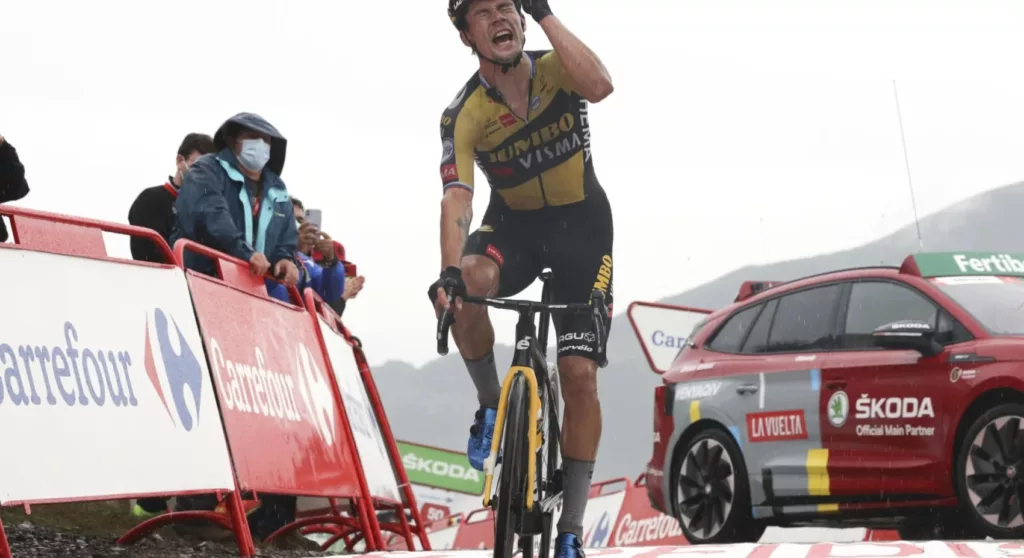
Photo Credit: Cor Vos
Famous Cycling Moments at Lagos de Covadonga
The Lagos de Covadonga have become a legendary destination for road cyclists, especially in the context of the Vuelta a España. The climb to the lakes is considered one of the most difficult and beautiful climbs in the world, and it has been featured in the race several times.
One of the most famous moments in the history of the Lagos de Covadonga and the Vuelta a España took place in 1983, when Spanish cyclist Marino Lejarreta won the stage that took riders up the steep climb to the lakes. The summit finish has been used many times since then, with major names like Pedro Delgado (1985 & 1992), Robert Millar (1986), Lucho Herrera (1987 & 1991), Laurent Jalabert (1994 & 1996), Nario Quintana (2016), Thibaut Pinot (2018) and Primož Roglič (2021) all winning.
The Lagos de Covadonga continue to be a popular destination for road cyclists, and the climb to the lakes remains one of the most challenging and rewarding experiences for riders of all levels. Whether you are a seasoned pro or just starting out, a visit to the Lagos de Covadonga is sure to be a highlight of any cycling trip to northern Spain.
The Lagos de Covadonga and the Vuelta a España are two closely linked names in the world of cycling, and they both offer a wealth of history, beauty, and excitement for cyclists and outdoor enthusiasts. Whether you are looking for a challenging ride or just a peaceful escape in the mountains, the Lagos de Covadonga is a destination you won’t want to miss.


